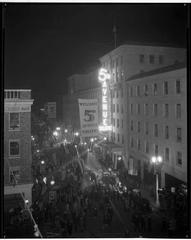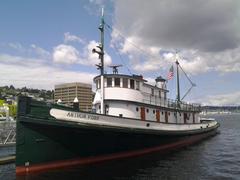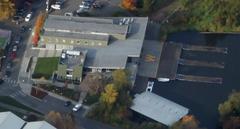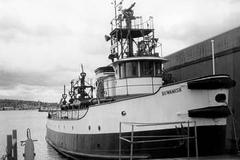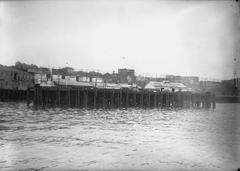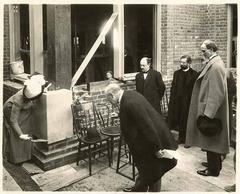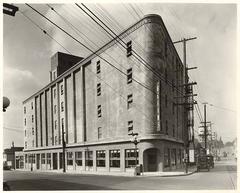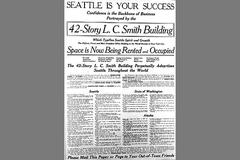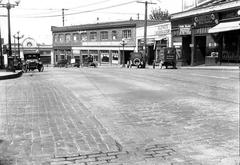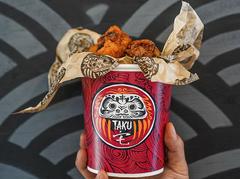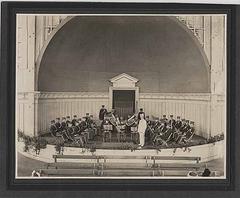
Harbor Island Seattle: Visiting Hours, Tickets, and Travel Guide
Date: 03/07/2025
Introduction
Nestled where the Duwamish River meets Elliott Bay, Harbor Island is a testament to Seattle’s industrial ambition and maritime heritage. Once tidal flats inhabited and cultivated by the Duwamish people, this area was dramatically transformed in the early 20th century—becoming the largest artificial island in the world at its completion. Today, Harbor Island remains a bustling port and industrial hub. While direct public access is restricted due to its active operations, visitors can engage with its story and witness its scale from surrounding parks, harbor cruises, and educational tours. This detailed guide explores Harbor Island’s history, current significance, visiting logistics, and nearby attractions, providing all you need to plan an insightful Seattle visit.
Table of Contents
- Indigenous Heritage and Early Landscape
- Creation of Harbor Island (1900–1909)
- Early Industrial Development
- Public vs. Private Control and Port Development
- Expansion and Engineering Challenges
- World War II and Shipbuilding Boom
- Postwar Industrialization and Environmental Impact
- Environmental Cleanup and Modern Transformation
- Harbor Island Today: Industrial Hub and Visitor Access
- Frequently Asked Questions (FAQ)
- Summary and Final Tips
- References
Indigenous Heritage and Early Landscape
Before industrial transformation, the area that became Harbor Island was a vibrant tidal flat at the mouth of the Duwamish River. The Duwamish people relied on these estuarine environments for fishing and cultivation over millennia (ASCE). With the arrival of non-Native settlers in the 1800s, the landscape began to change rapidly to support Seattle’s growing marine industry (HistoryLink).
Creation of Harbor Island (1900–1909)
Seattle’s ambitions as a port city led to the concept of Harbor Island. From 1900 to 1909, over 24 million cubic yards of fill—dredged river material and earth from city regrades—were used to build the island (HistoryLink). At 350 acres upon completion, it was the world’s largest artificial island and became a magnet for heavy industry (Seattle Times).
Early Industrial Development
Major industries quickly established a presence. Fisher Flouring Mills began operations in 1911, and the Puget Sound Bridge and Dredging Company developed shipyards that would play a pivotal role in World War I (HistoryLink). The island’s central location made it ideal for shipbuilding, repair, and cargo handling.
Public vs. Private Control and Port Development
Early debates focused on whether Harbor Island should be a public or private facility. Proposals for public port development were ultimately set aside, leaving the island in private hands while the Port of Seattle developed terminals elsewhere on Elliott Bay (HistoryLink).
Expansion and Engineering Challenges
Harbor Island expanded over the decades, reaching nearly 400 acres by the 1960s (HistoryLink). Its construction on unstable sediments made it vulnerable to seismic activity, with notable shifts during the 1949 and 1965 earthquakes (Seattle Times).
World War II and the Shipbuilding Boom
During WWII, Harbor Island’s shipyards ramped up production, employing thousands—including women and minorities—and building vessels crucial to the Allied effort (HistoryLink). This period solidified Seattle’s reputation as a maritime powerhouse.
Postwar Industrialization and Environmental Impact
After the war, Harbor Island continued as a center for shipbuilding, metal recycling, petroleum storage, and cargo handling. Decades of intensive industry led to significant soil and water contamination—including lead, PCBs, arsenic, and mercury (Port of Seattle). In 1983, the EPA designated Harbor Island a Superfund site (EPA PDF).
Environmental Cleanup and Modern Transformation
Extensive cleanup efforts have been underway since the 1980s. The EPA organized remediation into six operable units, with sediment removal, habitat restoration, and ongoing monitoring in place (EPA PDF). The Port of Seattle continues to invest in green technologies and environmental stewardship (Port of Seattle).
Harbor Island Today: Industrial Hub and Visitor Access
Harbor Island remains a vital component of the Pacific Northwest’s economy, home to Terminal 18 (one of the region’s largest container terminals), shipyards, and logistics facilities (MarineLink). While most of the island is closed to public access, you can experience its significance from nearby parks, harbor cruises, and occasional guided tours.
Visiting Hours, Tickets, and Accessibility
- Harbor Island itself: Not open for casual public visits due to active industrial operations.
- Public Parks: Jack Block Park and Terminal 18 Park are open from dawn to dusk year-round, offering trails, picnic areas, and excellent vantage points. No tickets are required (Port of Seattle Visitor Info).
- Harbor Cruises: Daily narrated cruises from Pier 55 offer panoramic views of Harbor Island, Seattle’s skyline, and Elliott Bay. Cruises typically run 10:00 AM–6:00 PM, with seasonal evening options (Argosy Cruises). Tickets are $30–$40; advance booking is recommended (CityPASS).
Getting There
- By Car: Use the West Seattle Bridge or Spokane Street Bridge; parking is available at Jack Block Park and Terminal 18 Park, but is otherwise restricted on the island itself.
- By Public Transit: Limited bus service is available to nearby industrial areas; downtown Seattle and the waterfront are well-served by Metro buses (King County Metro).
- By Bicycle: Bike lanes cross the bridges; exercise caution due to heavy industrial traffic.
Special Events and Tours
- Guided Tours: Historic Seattle occasionally offers tours of Harbor Island Studios (in the former Fisher Flour Mill) and special industrial history events (Historic Seattle). Harbor cruises can be bundled with other attractions via Seattle CityPASS (CityPASS).
- Seasonal Events: Check the Seattle Waterfront Community Calendar for concerts, tours, and special events.
Best Viewing and Photography Spots
- Jack Block Park & Terminal 18 Park: Best land-based spots for photos of Harbor Island’s shipyards, cranes, and the Seattle skyline.
- Seattle Waterfront Promenade: Offers elevated views, especially from Pier 62 and Overlook Walk (Seattle Waterfront).
- Aboard Harbor Cruises: Capture dramatic shots of the island and city, particularly at sunset.
Nearby Attractions
- Seattle Aquarium: At Pier 59, features marine life and rooftop views (Seattle Waterfront).
- Seattle Great Wheel: Offers panoramic views of the harbor and Harbor Island.
- Pike Place Market: Iconic historic marketplace nearby (Wikipedia).
- Museum of History & Industry (MOHAI): In South Lake Union; excellent for local history (MOHAI).
- Pioneer Square: Seattle’s historic district with museums and tours.
Safety, Accessibility, and Etiquette
- Industrial Area: Stay within public parks or on authorized cruises; do not enter restricted zones on Harbor Island.
- Accessibility: Parks and cruises offer accessible features, but Harbor Island itself is not designed for pedestrian or wheelchair access.
- Photography: Respect signage and port rules, especially near active terminals.
Frequently Asked Questions (FAQ)
Q: Is Harbor Island open to the public?
A: No, the island is an active industrial port. Public access is limited to adjacent parks and guided tours.
Q: Are there guided tours on Harbor Island?
A: Yes, but only for special events and by reservation through operators like Historic Seattle.
Q: What are the visiting hours for parks near Harbor Island?
A: Typically open from dawn to dusk, year-round.
Q: How can I get the best views of Harbor Island?
A: From Jack Block Park, Terminal 18 Park, the Seattle Waterfront, and harbor cruises.
Q: Are harbor cruises accessible for people with disabilities?
A: Yes; check with your cruise operator for specific accommodation details (CityPASS).
Summary and Final Tips
Harbor Island embodies Seattle’s dynamic maritime and industrial legacy, from its Indigenous roots and engineering marvels to its ongoing economic and environmental roles (HistoryLink, MarineLink). While public access is limited, visitors can appreciate the island’s scale and significance from nearby parks, cruises, and special tours. Combine your visit with other waterfront attractions like the Seattle Aquarium, Pike Place Market, and MOHAI for a comprehensive Seattle experience. For the latest information, download the Audiala app, follow the Port of Seattle, and check official event calendars.
References
- ASCE
- HistoryLink
- Seattle Times
- Port of Seattle
- EPA PDF
- MarineLink
- Historic Seattle
- Argosy Cruises
- CityPASS
- Seattle Waterfront
- MOHAI
- Legends of America
- Events12
- Journey Rapture
- Wikipedia
















